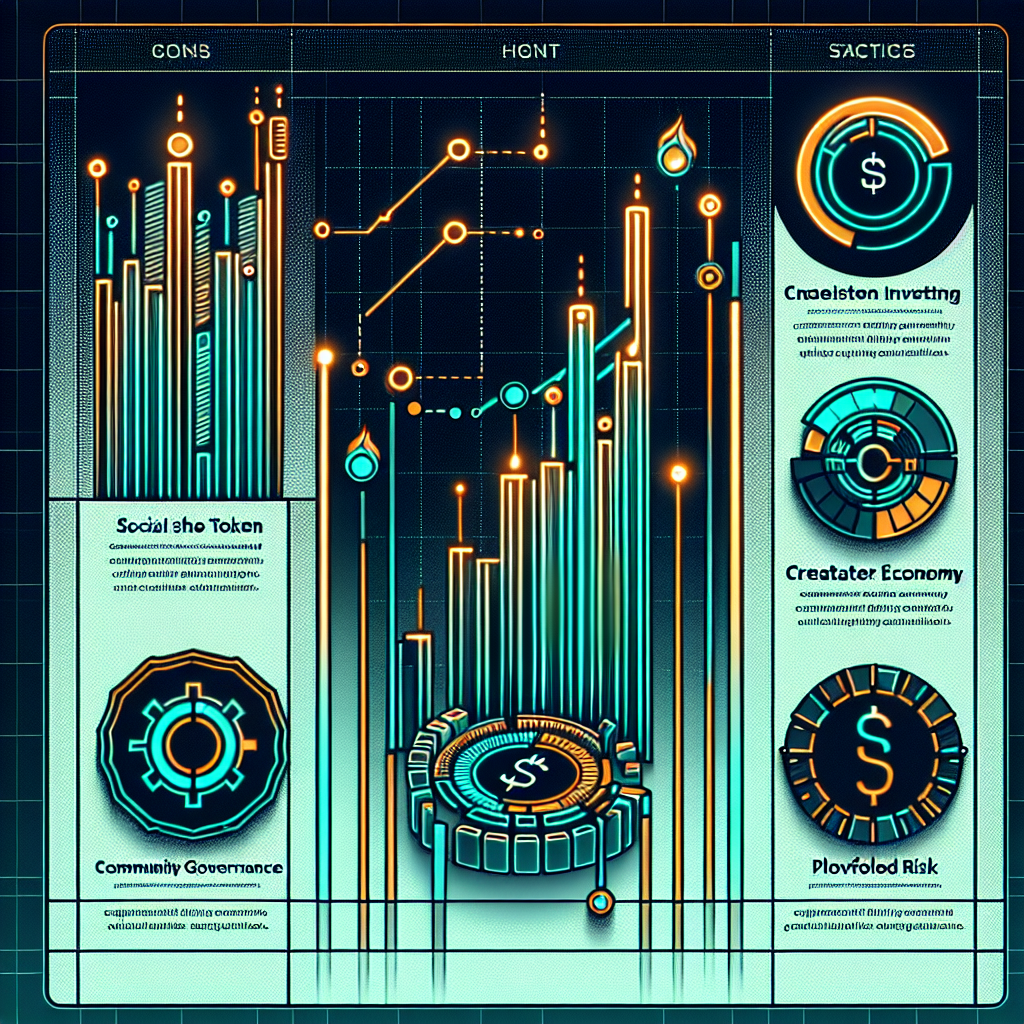Social Token Investing 101: Creator Economy Monetization Models, Community Governance, and Portfolio Risk Considerations

Introduction to Social Tokens
Social tokens are blockchain-based digital assets that represent the brand, time, or reputation of an individual creator, community, or project. Because they live on public ledgers, these tokens can be traded, programmed with utility, and integrated across Web3 platforms. For investors, social tokens open exposure to the fast-growing creator economy while offering new possibilities for yield and governance. Before allocating capital, however, it is critical to understand how creators monetize, how communities govern themselves, and how various risk factors shape portfolio construction.
How Creators Monetize With Social Tokens
A monetization model defines how demand for a social token is created and sustained. A creator who issues tokens without a revenue engine risks building a purely speculative bubble. The models below outline the most common approaches used today and highlight the signals investors should watch for when screening opportunities.
Personal Tokens
Personal tokens are tied to an individual’s future labor, brand collaborations, or intellectual property. Musicians might pledge a percentage of streaming royalties; athletes might promise exclusive merchandise drops; educators may grant holders access to private courses. In each case, the investor thesis rests on the creator’s ability to expand their audience and fulfill promised perks. Key metrics include follower growth, cross-platform engagement, and historical revenue figures. A transparent vesting schedule also prevents sudden supply shocks that could tank token price.
Community Tokens
Unlike personal tokens, community tokens distribute ownership of a collective mission such as a fan club, decentralized media studio, or open-source software guild. Revenue comes from membership fees, collaborative product launches, or treasury investments managed by the group. A vibrant community token should show high retention in Discord, on-chain activity such as proposals and votes, and a clear path to recurring income streams that flow back to the treasury or directly to holders via staking rewards.
Tiered Access and Utility Design
Successful social token economies often layer multiple utilities to reach diverse audience segments. For example, 10 tokens could unlock a basic newsletter, 100 tokens a private mastermind call, and 1,000 tokens a rev-share partnership on future projects. This tiered system grows lifetime value per fan while creating natural demand at different price points. From an investor perspective, utility depth provides downside protection because holders are less likely to panic sell if the token still grants meaningful access.
Community Governance Mechanics
Governance determines how decisions about the project’s direction, treasury spending, and tokenomics upgrades are made. Transparent and inclusive governance frameworks build trust, reduce churn, and, ultimately, enhance token value. Investors should therefore analyze how voting power is allocated, how proposals are surfaced, and how conflicts are resolved.
Token-Weighted Voting
The most common mechanism in today’s creator DAOs is token-weighted voting: one token equals one vote. While easy to implement, this design can favor early whales and discourage newer fans. Some communities mitigate plutocracy by capping votes per wallet, introducing quadratic voting, or rewarding participation with non-transferable reputation points. Reading past proposals on Snapshot or similar tools provides insight into actual voter turnout and whether influential stakeholders dominate outcomes.
On-Chain Versus Off-Chain Decisions
Critical budget or smart-contract changes should ideally be executed on-chain, ensuring immutability and transparency. However, minor content or branding choices may remain off-chain in a Multisig or even a simple Discord poll for speed. An effective governance stack often combines both layers. For investors, consistent documentation of decisions and clear role definitions—core team, council, community—indicate operational maturity and a lower risk of governance gridlock.
Mitigating Governance Attacks
Flash-loan attacks, vote buying, and Sybil attacks can manipulate outcomes if guardrails are weak. Look for time-locked contract upgrades, progressive decentralization roadmaps, and monitoring tools such as blockchain analytics dashboards that detect suspicious wallet clustering. Insurance funds or moderator councils that can veto malicious proposals provide another layer of defense but should be time-bounded to avoid permanent centralization.
Portfolio Construction and Risk Management
Social tokens behave differently from traditional assets and even from mainstream cryptocurrencies like Bitcoin or Ethereum. Thin order books, regulatory ambiguity, and creator idiosyncratic risk mean investors must adapt their portfolio frameworks accordingly.
Diversification Across Creator Categories
Spreading exposure across niches—music, gaming, education, sports—reduces correlation risk. Macro-level shocks such as platform policy changes or a bear market impact all social tokens, but category-specific news (e.g., Spotify royalty updates) may only affect musicians. A simple heuristic is to cap allocation to any single creator or community at 5–10% of the overall social token sleeve of a portfolio.
Liquidity and Exit Strategies
Many social tokens trade on decentralized exchanges with limited liquidity. Slippage can erode returns, especially when exiting a sizeable position. Therefore, investors should examine daily trading volumes, depth of order books, and the presence of market-making programs funded by the treasury. Setting limit orders rather than market orders, using dollar-cost averaging for entry and exit, and monitoring lock-up schedules help manage liquidity risk.
Regulatory and Tax Considerations
Because social tokens can blend aspects of securities, commodities, and loyalty points, regulatory treatment remains fluid across jurisdictions. The Howey Test in the United States, MiCA in Europe, and country-specific capital gains rules may all apply. Investors should track disclosures by the issuing creator, avoid projects that promise passive profit without clear utility, and maintain meticulous cost-basis records for tax reporting. Consulting legal counsel before crossing large investment thresholds is prudent.
Key Takeaways
Social tokens empower creators to monetize directly and communities to co-own cultural products, but they also introduce unique governance and liquidity challenges. Investors who analyze monetization models, audit governance frameworks, and implement robust risk management can capture upside while mitigating pitfalls. As the creator economy evolves, due diligence and active engagement will separate sustainable token economies from fleeting hype cycles.